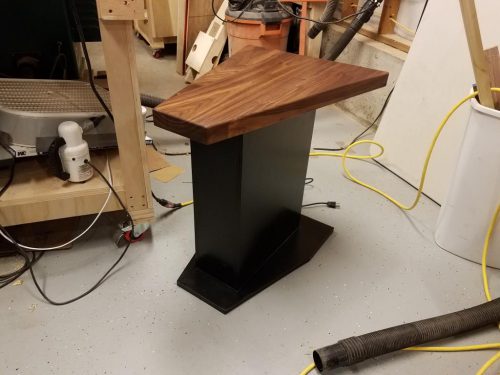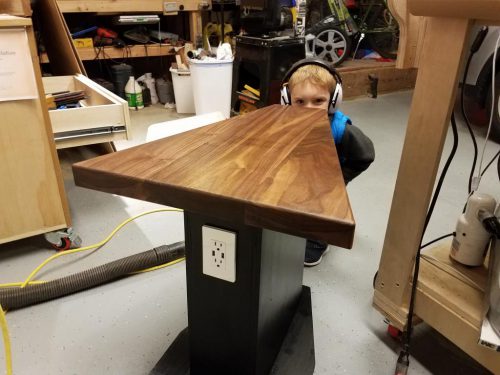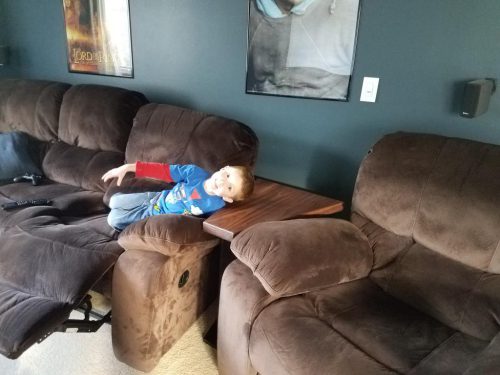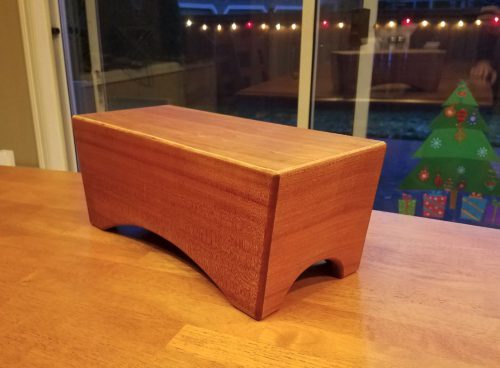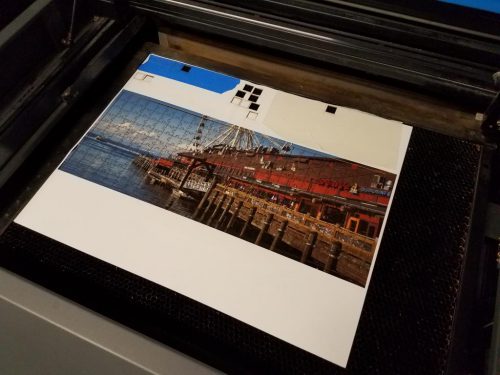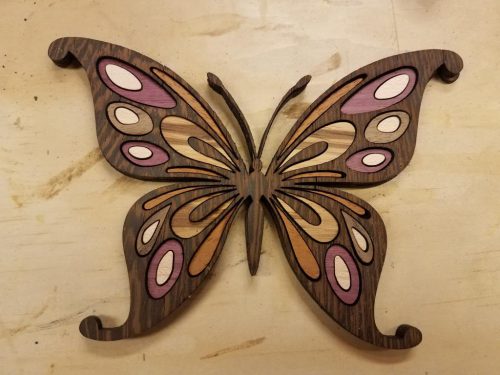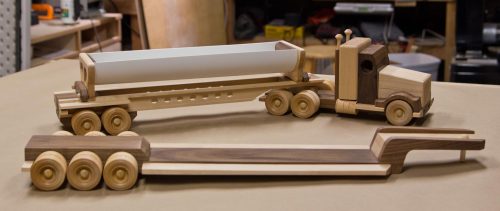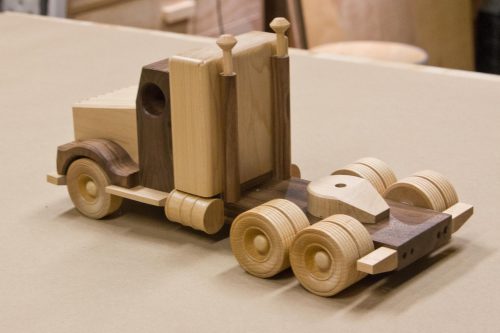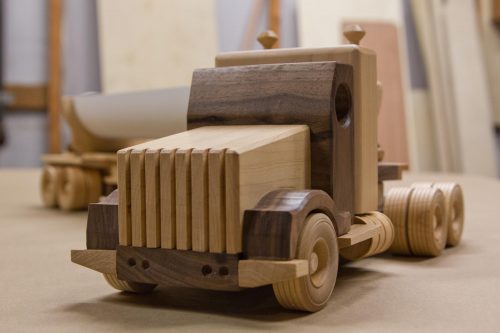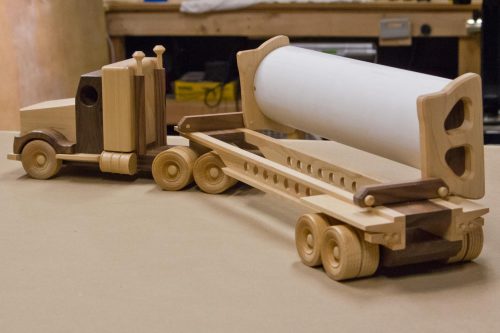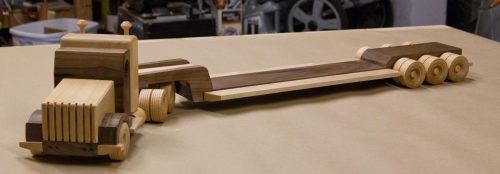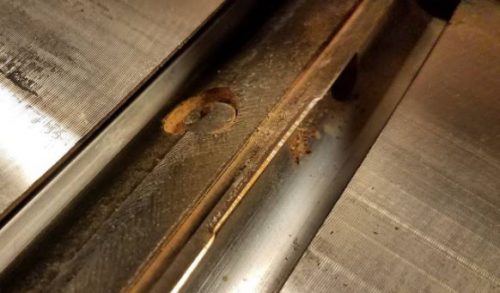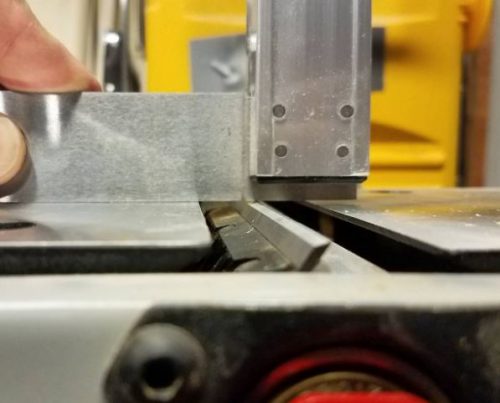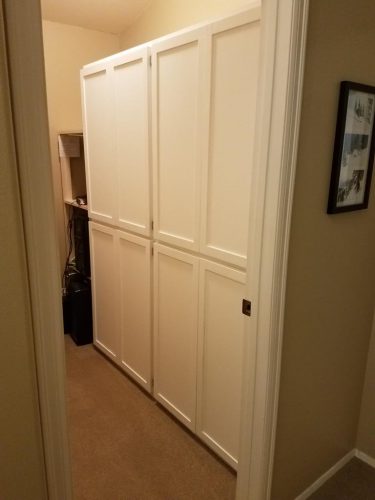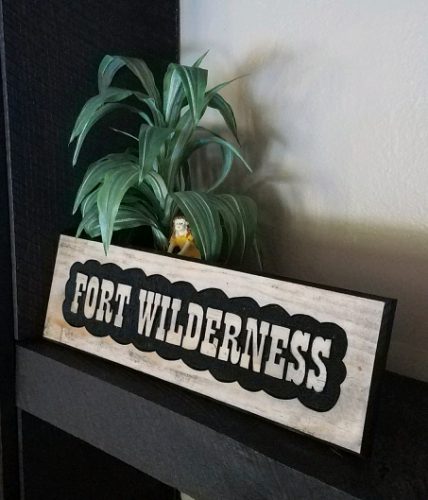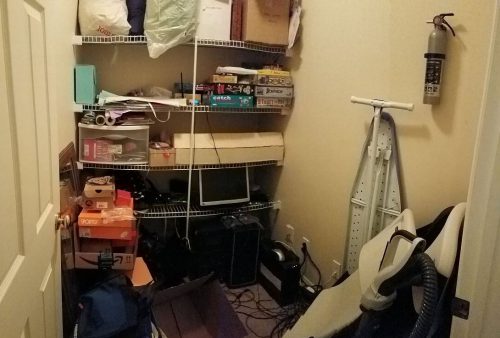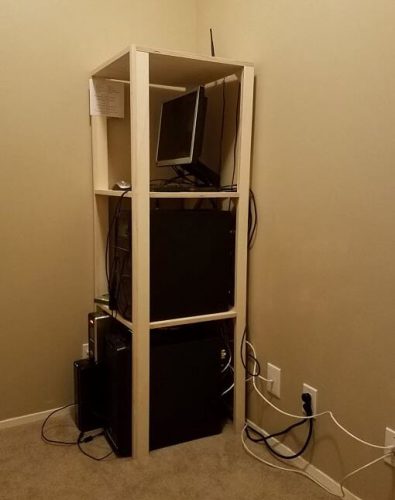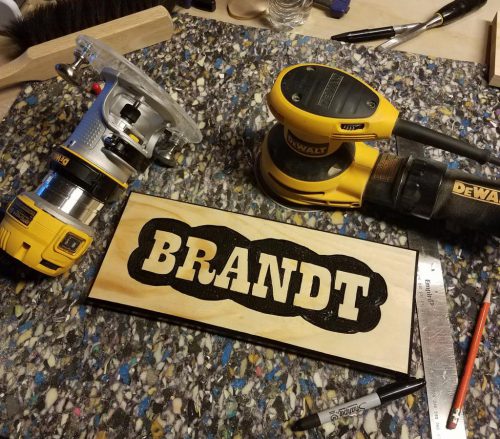Up in the man cave, there is a couch with a recliner beside it and the recliner is at an angle to the couch. We have a set of cheapo folding food table things that sits in the gap between the chairs but it doesn’t look very nice. Almost exactly one year ago, David Picciuto made a table to fit a similar spot in his house and I finally got around to making my own version.
Most of this project will be hidden between the sofa and the recliner so I spent all of the funds for this project on the top. I bought a big chunk of 6/4 walnut and glued three pieces of it together to get a slab that was wide enough for the table. I carefully cut the appropriate wedge shape out of the slab and then built a simple plywood box for the base. The top is just held in place by gravity and a few cleats on the bottom so that it doesn’t slide around. You can lift off the top and get to some storage and the other feature of the base is that it has a built-in outlet and dual 2 amp USB chargers built into the back.
The base got painted black and the top was finished with teax oil and then covered in Briwax. Needless to say, this looks MUCH nicer than what we had there before! The downside is that now I feel the need to use a coaster. Hmm… Anyway, this went well so I’m going to make a similar table for spot between the couch and the wall. This one will just be a simple rectangle top though so that should make things a little simpler.

